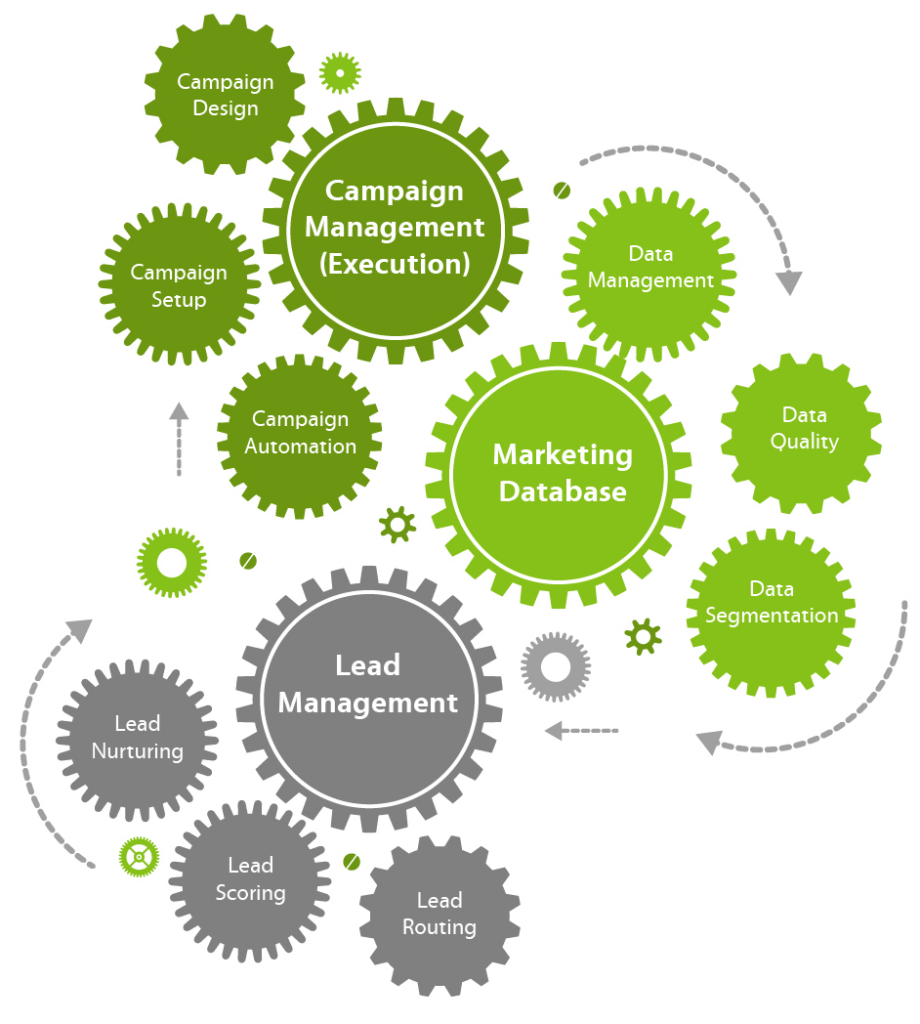Marketing automation ensures efficient, time- and resource-saving marketing in the company. In order to unleash its full potential, certain prerequisites must be met. The 7 success factors described in this article cover the preparation, Implementation and readjustment of marketing automation. To achieve optimal results, it is important to consider the steps.

Marketing Automation projects - why and what for?
When you think of marketing automation projects, the first thing that comes to mind is usually automatic lead generation or Email Automation one. In the course of digitization, almost all B2B communication has shifted to online channels. Nowadays, lead generation can no longer be managed manually anyway. Good automation options are needed here to be successful.
Marketing automation uses software tools and platforms to help digitize marketing and sales processes.

The Automation of marketing processes enables more intensive, personalized and optimized marketing, which in turn increases sales success. The essential success factors include automated workflows.
Which success factors are crucial for marketing automation projects?
1. define goals
The first of the 7 success factors in marketing automation is the definition of your goals. Therefore, at the beginning, make clear which processes you want to cover with Marketing Automation. You probably want more qualified leads, more efficient processes and scalable, successful marketing campaigns. Especially if you have both B2B- and B2C customers, you can use automation to ensure that your target groups are correctly addressed.
2. set strategy
Develop the marketing strategy you want to pursue through automation. Create campaign strategies for individual products. Work out the campaigns in all their details before automating them. Also determine which metrics and KPIs to help you measure success later.
3. know Buyer Persona in all details
Your marketing automation projects are made for real people. Above all, you need to use it to skillfully engage their target audience. That's why it's so important to Buyer Persona define them precisely as early as possible in the process. Create a detailed picture of your ideal customers and clients, give them a name and create a concrete picture that corresponds to them. You need to have a concrete idea of who you want to set up your marketing automation projects for and who you want to reach. These points should be included in the buyer persona profile:
- Personality
- Interests and preferences
- sociodemographic data
- Pain Points
- Information and research behavior
- Field of activity
- Expectation
- Device Usage.
4. choice of the right software
Only when you know your requirements, goals and strategy, and who you are automating your marketing for, choose the right Software. After all, the software should fit your needs and not the other way around. Your company size and budget also play a role in the choice. The software should meet the following minimum requirements:
- Tag-based: This allows contacts to be collected based on an individual tag, clearly and automatically in one place. Depending on the action, purchase or status, the contact is given a virtual tag by the program.
- the desired language: The software should have your preferred language to choose from in order to address the desired target group appropriately. Of course, you should also be able to operate the software with the right language.
- Data protection compliant: The software should not violate the applicable legal regulations.
- own IP: This allows a device to be precisely identified and data to be sent to the correct device or user.
Softwares that meet these requirements are for example HubSpot, Bloomreach, Emarsys, Salesforce or Oracle Eloqua. Prices vary depending on functionality, size of customer database, number of users, etc.
5. onboarding of employees
In your company, the marketing team and ideally also the sales team should be able to handle marketing automation - otherwise the purchase is useless. Onboarding is done, for example, through video courses provided by the software vendors or through internal training and coaching.

However, it takes time and discipline to work through the multitude of videos. Numerous providers offer individual onboarding, which is efficient but often price-intensive. Alternatively, onboarding can be done by an agency. Especially if you are accompanied by an agency during the implementation, this makes sense. The agency team can also show you various hacks to get the most out of the automation solution.
6. implementation, measurement, optimization
Now the big moment has come: You finally put your strategy into action! First, map your strategy in the software. Don't forget to test it extensively before going live. Once everything is working and the automation is running, however, your work is not done yet. To get the best out of it, you need to constantly measure and optimize the processes. This is where the KPIs you set when designing your marketing automation project will help you. These can include the following values:
- Opening and Email click-through rates
- Entry rates in forms
- Conversion rates for visitor-to-lead and lead-to-customer.
Regular meetings between the marketing and sales teams are also among the proven success factors. These can discuss current challenges and problems every two weeks or so and work out joint, coordinated solutions. In the long term, this ensures that both teams are pulling in the same direction and working together instead of against each other.
7. not be embarrassed to ask for advice
Among the decisive Success factors also includes support from experts who have a proven track record of successfully launching marketing automation projects.

It has proven effective to have their advice and support at every step from conception to implementation in order to avoid detours.
Would you like professional support in implementing your marketing automation projects? Contact us!
Conclusion
Marketing Automation projects make processes more efficient and facilitate many operations in the company. Nowadays, they are effective and advantageous if a company wants to grow in the long term. Even and especially if your clientele comes from different areas, automation facilitates addressing and targeted marketing. However, in order for marketing automation to be put on a solid footing and fully develop its effect, you should consider the success factors described above. Otherwise, difficulties will arise at one or more points, which will ultimately hinder the entire process or prevent it from moving forward.






